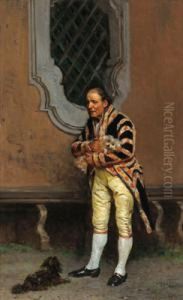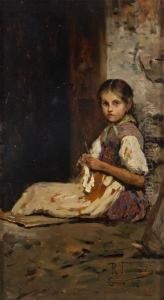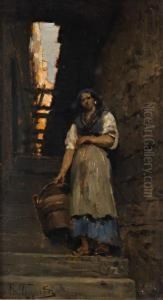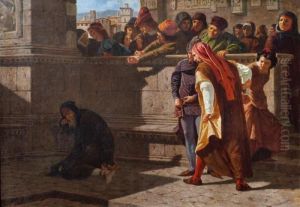Raffaello Tancredi Paintings
Raffaello Tancredi was an Italian painter, born in 1837 in Naples, Italy. His artistry was shaped during the period of the Italian unification and belongs to the 19th-century school of Neapolitan painting. Tancredi displayed a natural talent for painting from a young age, which led him to pursue formal art education.
He studied at the Royal Institute of Fine Arts in Naples, where he was under the tutelage of some of the prominent artists of the time, such as Gabriele Smargiassi and Giuseppe Mancinelli, who were instrumental in shaping his early style. Tancredi's work was characterized by its romantic themes and was heavily influenced by the Neapolitan tradition, as well as by the prevalent Romanticism in Europe. His paintings often featured historical scenes, landscapes, and genre paintings that depicted everyday life with a touch of idealism.
Throughout his career, Raffaello Tancredi participated in various exhibitions, gaining recognition and accolades for his work. His paintings were appreciated for their vivid detail, use of color, and the ability to capture the spirit of his subjects. Tancredi's work encapsulates the transition in Italian art from the grandiosity of history painting to a more intimate and realistic portrayal of subjects.
Later in life, Tancredi became a respected teacher, passing on his skills and knowledge to the next generation of Neapolitan artists. His influence was significant in the continuation and development of the Neapolitan painting tradition.
Raffaello Tancredi died in 1915, leaving behind a legacy of work that continues to be studied and admired for its contribution to Italian art. His paintings are held in various collections and museums, serving as an enduring testament to his skill and artistry.



